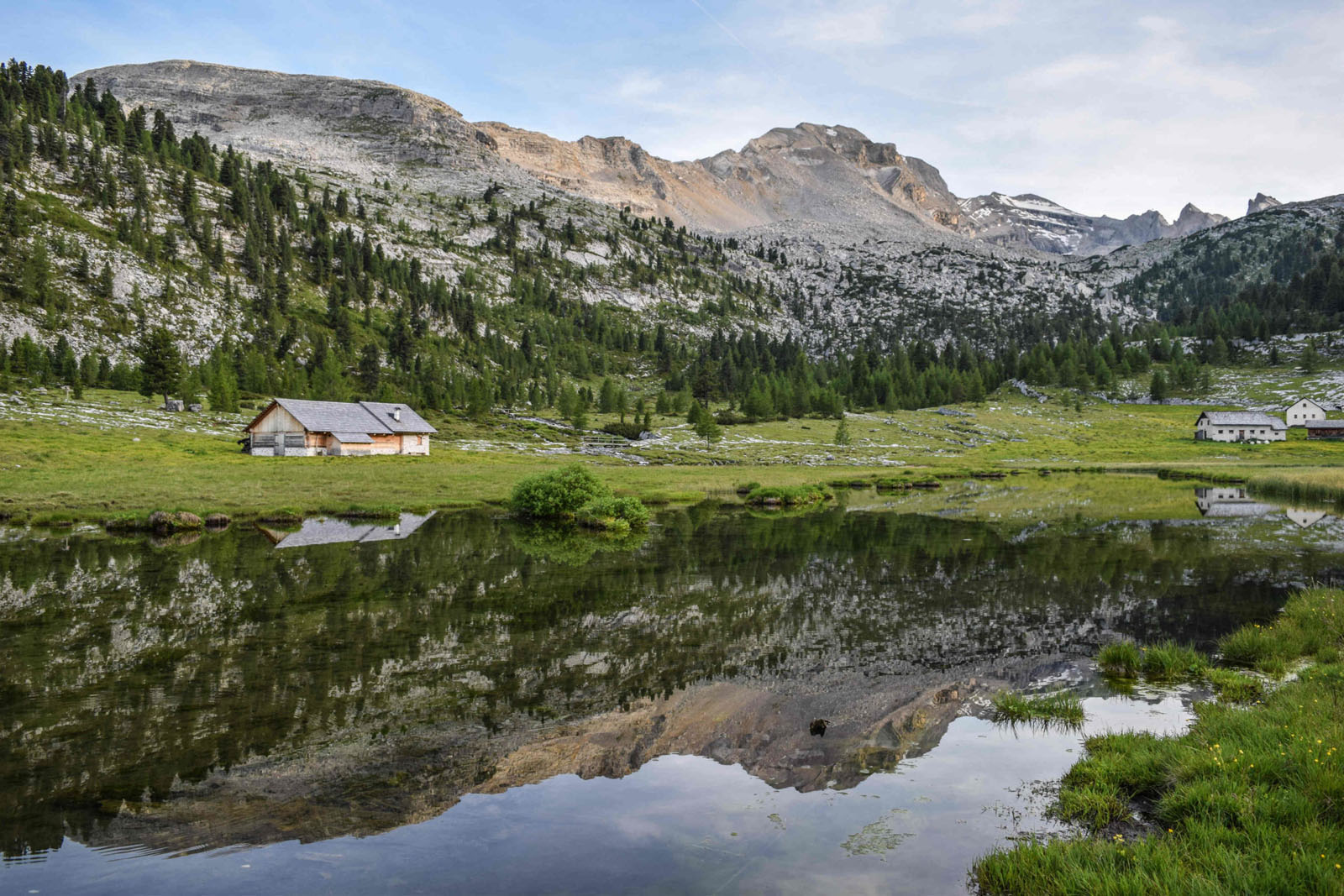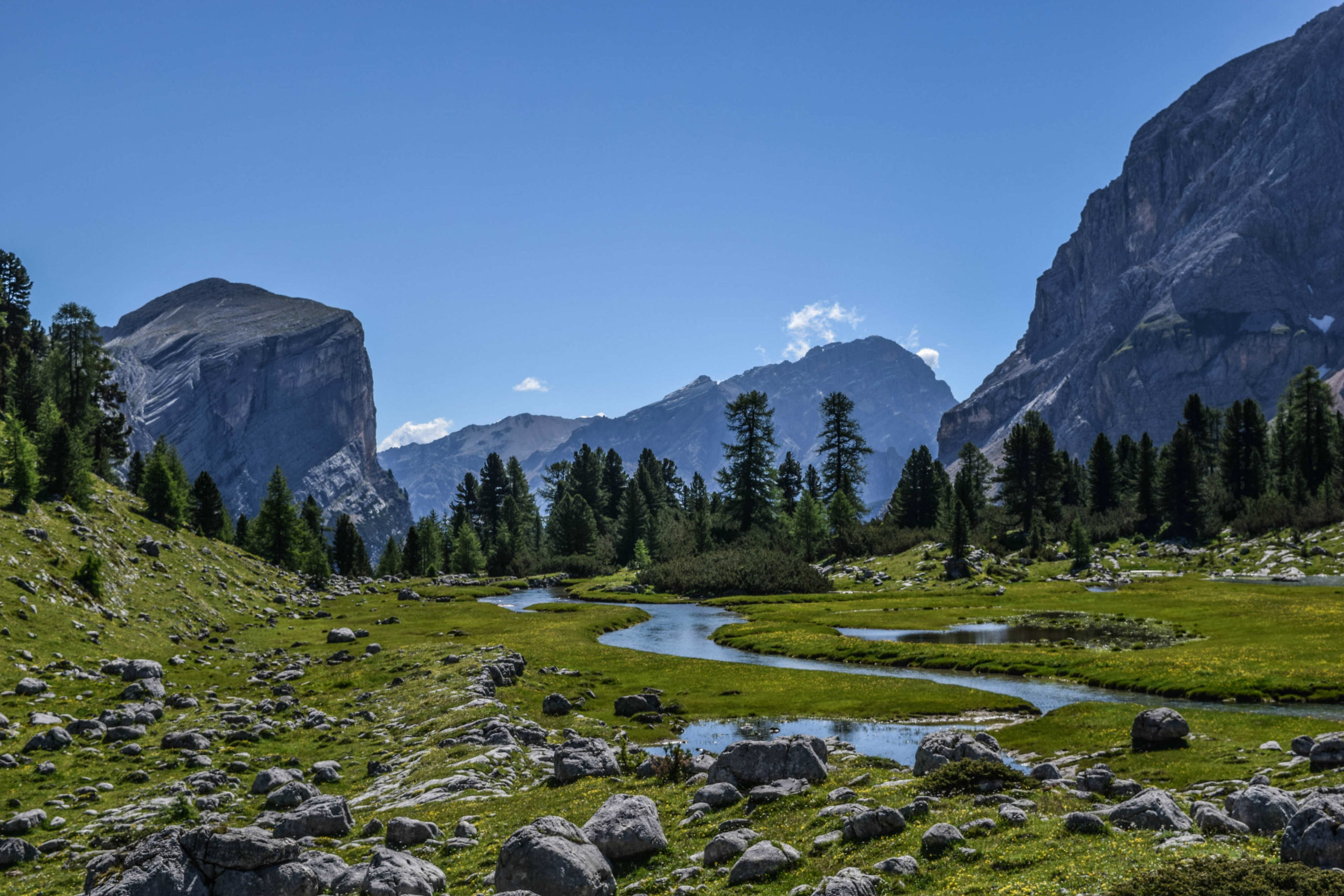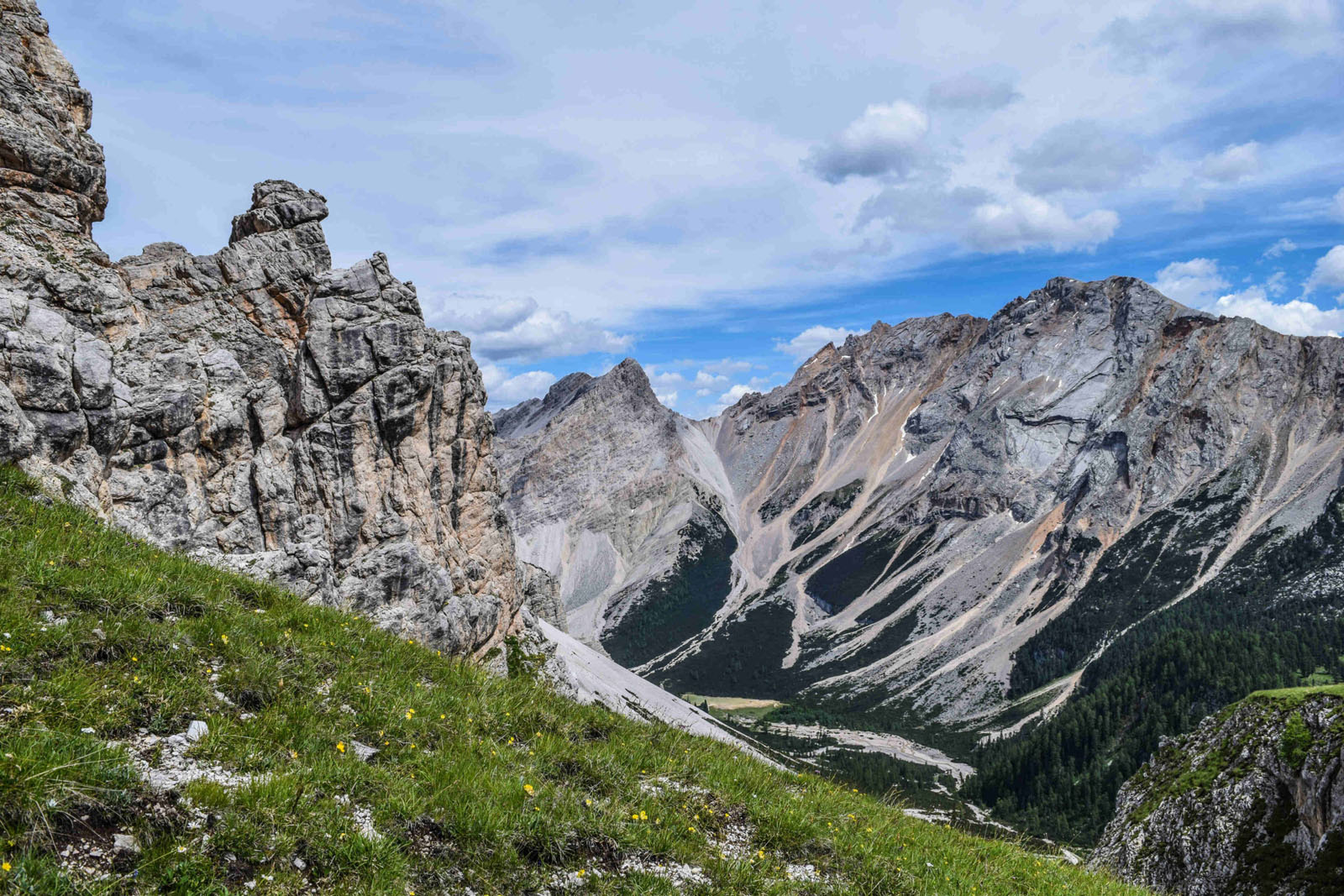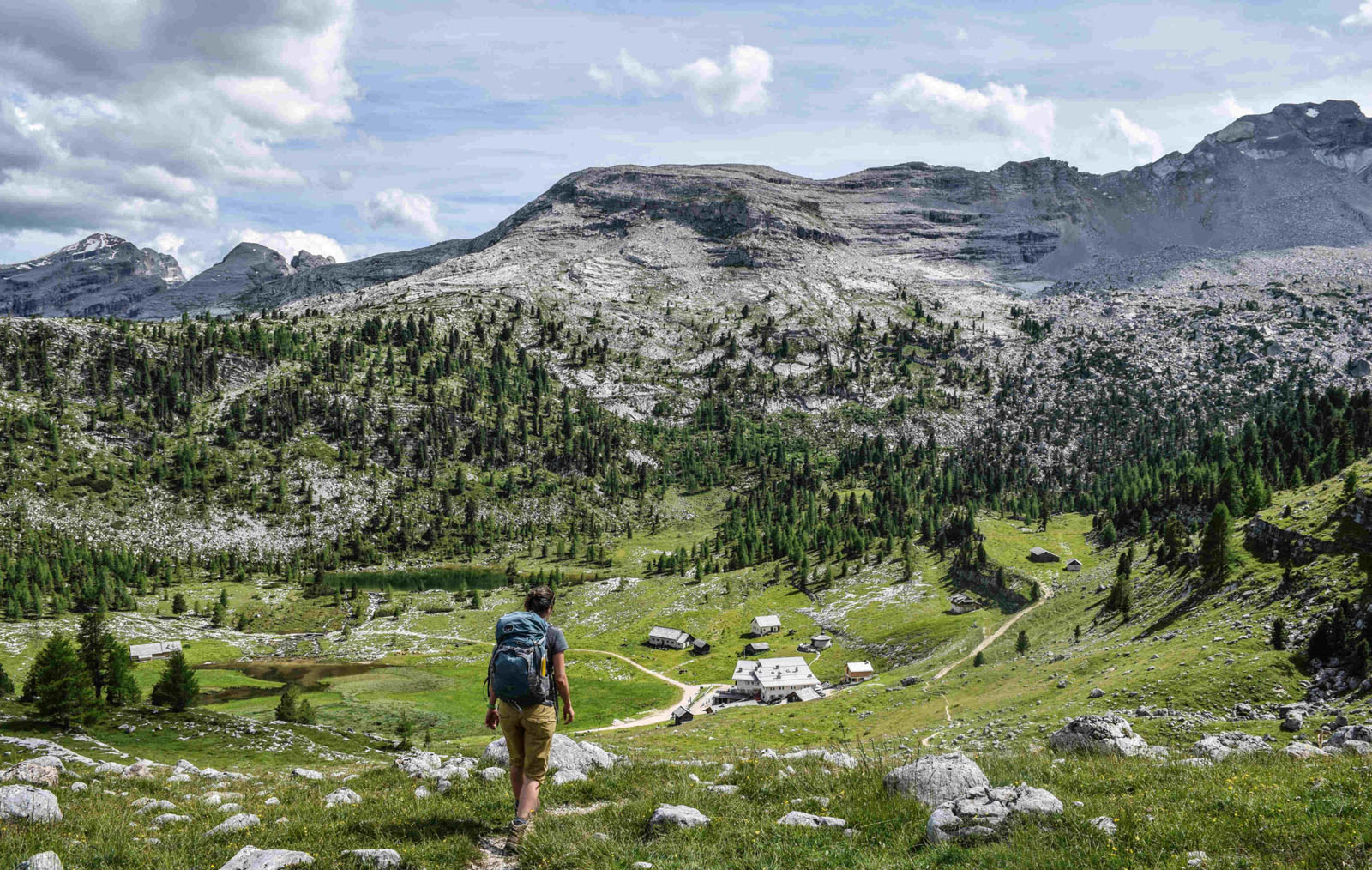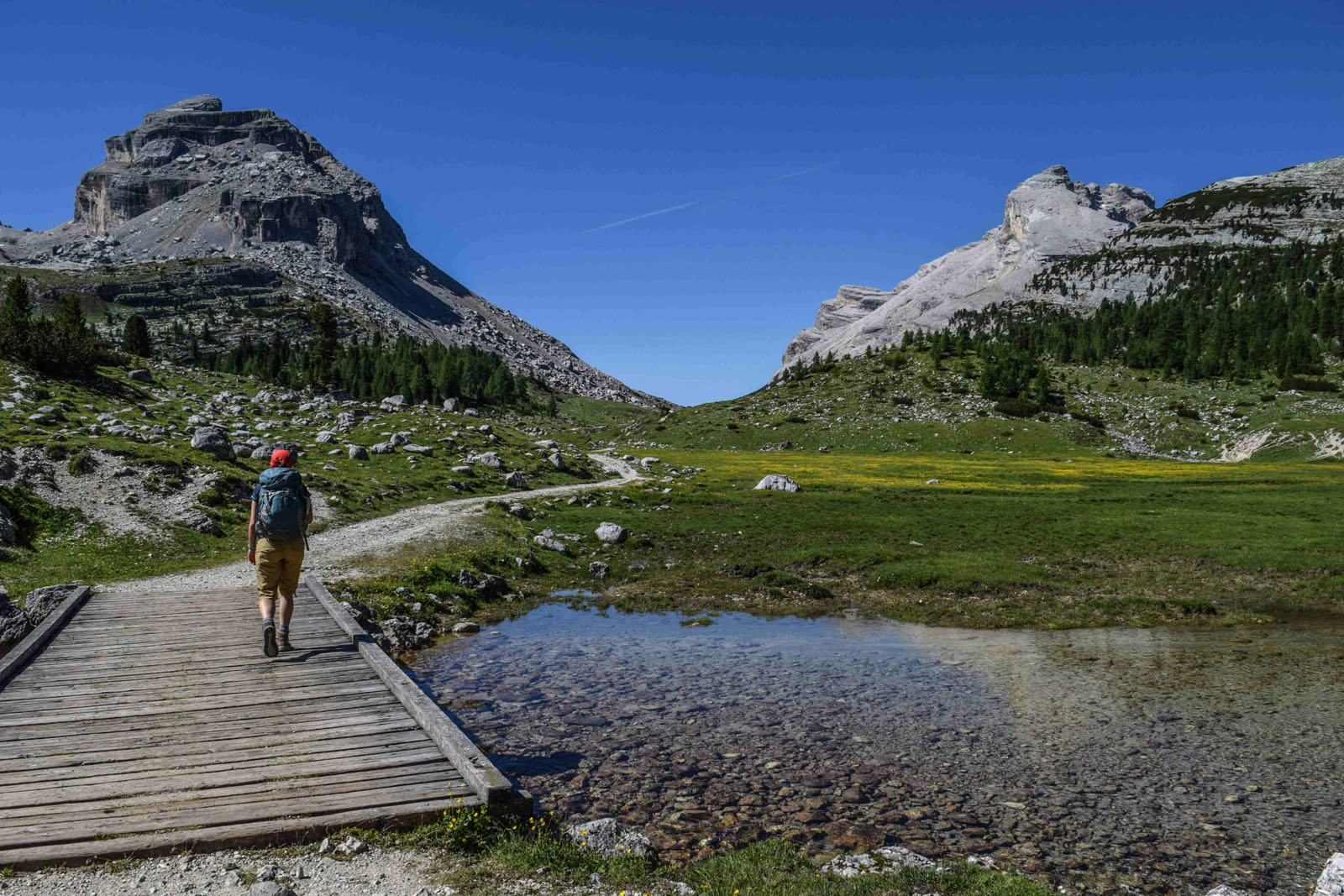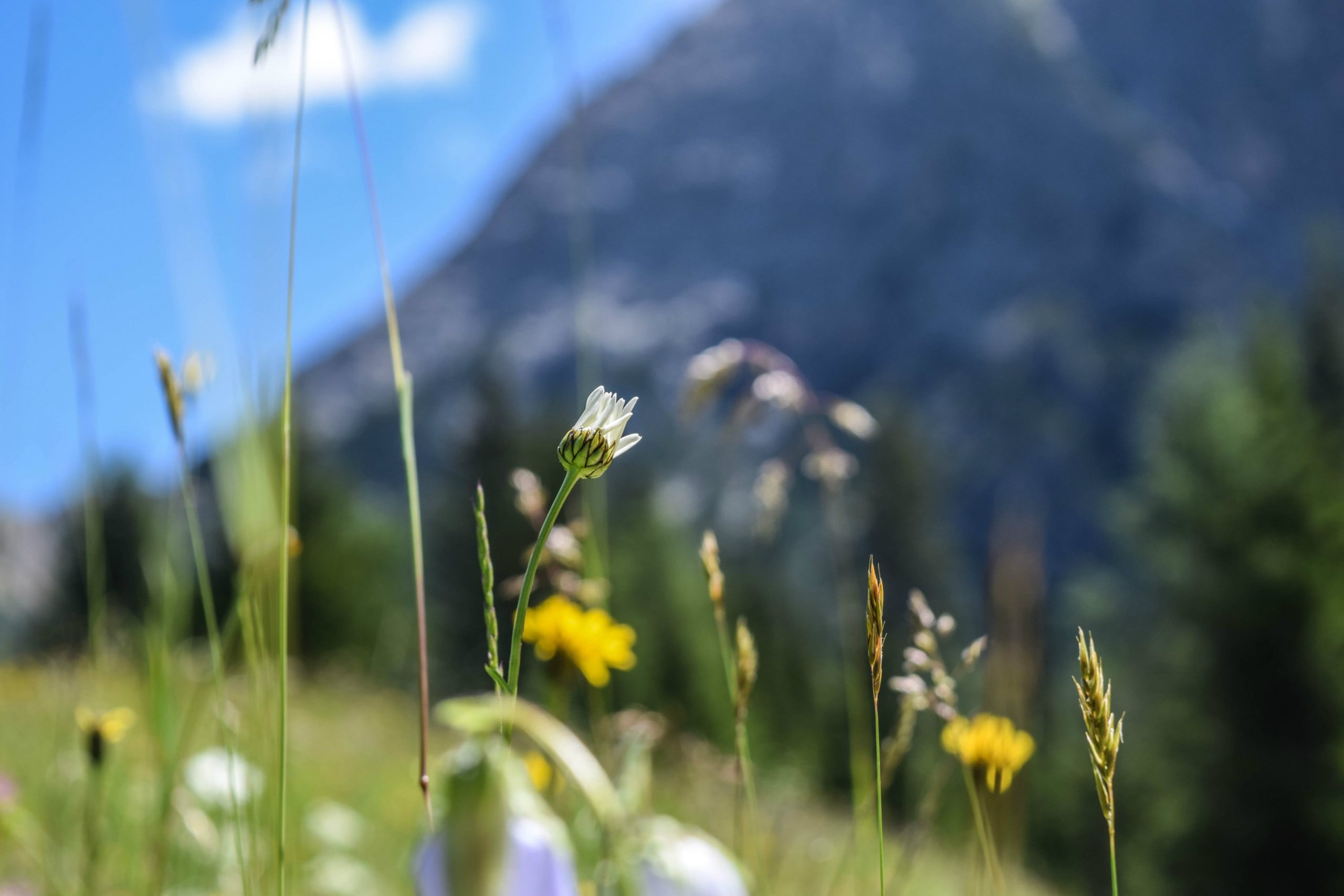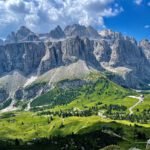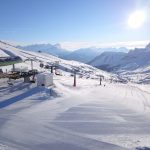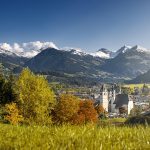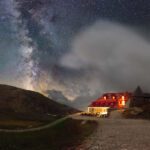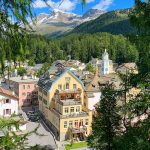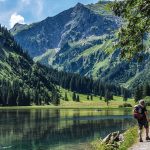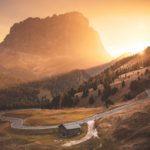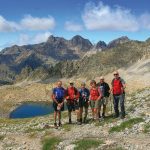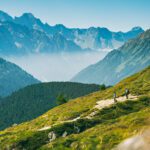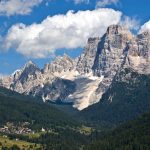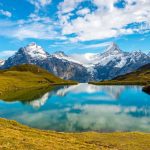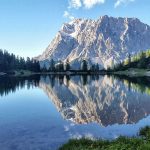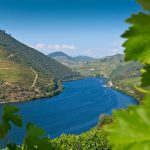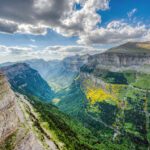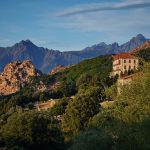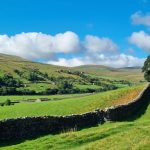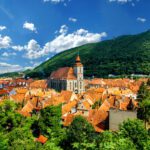15 July 2016
A soft orange light swept over the valley, illuminating the wisps of low-lying cloud that had settled into an inversion coating the Alta Badia. Below it must have still been dark in the early grey morning beneath me but for a fading rainbow sky had started to shed light on the higher western peaks and the mist moved like a sea, lapping at banking valley walls. Santa Croce rifugio and the neighbouring church sat nestled peacefully on the hillside above it all and I stood just above them shivering in the chilled 5am breeze. It was silent and beautiful, a popular tourist location, still and empty, and I felt like the only person awake for miles around.
There’s nothing quite like being on the mountain when everyone else has gone home. The hot, busy lunch times, the constantly running lifts, people bustling for a table with shade, it all lies still as the sun dips lower. All of a sudden only a few are left and the place becomes theirs. I have experienced this once before in winter on a ski safari. The awareness that day visitors are heading back down the mountain and the slopes begin to empty, the evening sets in and it’s time to shower and change after a long day before settling on a balcony to watch the sunset with a spritz to sip. I don’t know if I ever feel more content than at these times. What makes it more satisfactory is that you know that you have reached your bed for the night under your own steam and the drinks, rifugio dinner, hot shower and sleep are all well deserved. With tired legs and head there’s nothing left to do but mull over the day and enjoy it.
DAY 1
Max and I had set out from Haus Valentin in Perdraces late morning when the sun was already determinedly set in a cloudless sky. We enjoyed the shelter of the trees as we skirted along the west side of the valley towards La Villa, the recent setting for the penultimate climb in the Maratona bike race. The crowds that accompanied it have all gone home now but the remnants of the day can still be seen in the streets, the painted roads and banners that continue to hang proudly. Turning at La Villa to follow the river we headed towards San Cassiano where we enjoyed a coffee and bought ourselves a treat from the local bakery. Along the path to San Cassiano there are a series of statues and art installations which serves a pleasant distraction from the gentle climb.
We found a series of benches with increasingly impressive views and enjoyed regular breaks and sunny lunch stop. With only a few more miles ahead of us we were happy to take our time. We arrived under the towering cliffs of the Fanes Massif at the Santa Croce rifugio around 3pm and celebrated with a cool beer.
Situated at 2045m Santa Croce is a pilgrimage destination right at the bottom of the Fanes group cliffs. It is thought that the Church was constructed and consecrated in 1484 and then expanded in 1650. The accompanying rifugio was added in 1718, this is where we were to spend the night. The walls are thick and strong, the floors paved with heavy stone and the wooden stairs are uneven and polished from thousands of footsteps over hundreds of years. With barely a straight line in the place this building breathes it’s age through the rafters and yet it feels just as warm and welcoming as if you were the first person through the door. We were shown to our room a few floors up, it was clean and comfortable with wood panelled walls and a sweet little window. The beds were neatly waiting and looked inviting. We whiled the rest of our day away until dinner time came around. Upon arrival we’d been asked what we’d like for starter and main and the courses duly arrived as we took our seats. We were joined by Caroline, one of our Colletts guests who was also making her way along this particular hut-to-hut route.
On a perfectly sunny day the Santa Croce can become backed by a bright enrosadira (intense sunsets on Dolomite rock) but we were treated to a display of a different kind. Throughout the day the clouds had been pulling in close from all directions and sure enough during dinner the first flashes of lightning spilled through the windows. We enjoyed the comforting mountain food and local wine then headed outside to watch the storm roll in over the Sella and Puez. Such a cold, harsh wind had whipped up that it was a comfort to return to the warm interior and we watched the storm from the safety of the rifugio, sipping on an aperitif.
Once retired and wrapped warmly in my sheets I listened to the thunder through the crack in our open window. An immediate din shattered through the Alta Badia with long shards of fork lightning illuminating the room. Like a hammer on metal another clattering bellow wrenched and it sounded as if the mountains themselves might shatter. The wind murmured restlessly between pattering rain but it didn’t matter because we were walled in by thick, mountain build. Santa Croce kept us warm and cosy and emanated homeliness with all its many years of experience looking after mountain travellers.
DAY 2
The second day started early with the sunrise and inversion. I had woken early by chance and glanced out of the window to see the view. Trying my best not to wake Max I pulled on a jumper and grabbed my camera, creeping through the rifugio. It was breath-taking and I spent almost an hour taking photos before retreating inside.
Breakfast was supplied with fresh coffee and we packed our bags ready for the next section of the hut-to-hut. Caroline set off ahead and Max headed down the lifts back into Badia. I got my book out and waited for Sonny to arrive, she and I would be continuing onto Lavarella.
I watched climbers, walkers and cyclists pass the rifugio all heading out into the mountains for the day. The area slowly started to fill again with visitors and our little mountain hideout became busy once again. Sonny arrived a short time later and we enjoyed a quick coffee before heading off. Once again there was barely a cloud in the sky and the temperatures climbed quickly. We followed the path with the Fanes cliffs on our right and the Alta Badia valley below to our right. Soon the wooded landscape opened up to large rocky areas and a path leading up to a winter snow cave which has now melted back considerably.
Once again we knew we had all day, so enjoyed plenty of rests and played on a collection of wooden stilts left at the side of the path for walkers –we weren’t all that good which amused some passers-by. Branching right we began to climb towards a col in the distance and joined a hot gravel track which weaved through woodland for quite some time. Occasional breaks allowed us to look around at the continually beautiful views and the closer we got to the col the more the cliffs either side of us loomed. Long iron stained streaks painted the rock red and with the bright blue sky and luscious trees either side the colours were striking. We approached a high wall of scree from the base of the valley and picked up a narrow path that zig-zagged up. The mountains parted at the head of the pass to let walkers through and we kept it in view as we climbed without much shade from the unrelenting midday sun.
The cool breeze that greeted us at the top was a gift second only to the views either side. One way was the valley we just climbed up with Sas de Putia and the snowy peaks of Austria on the horizon. The other, an entirely new valley to me stretched out ahead. The spines of many a well-known mountain staggered the skyline but it was a challenge to figure out which one was which in this alien landscape. A long narrow path traversed the left hand slopes of another v-shaped dell leading to wide open meadows with the sound of squeaking marmots and ringing cowbells carried on the gentle wind. It wasn’t much further to Rifugio Lavarella, so we enjoyed lunch in the meadows and arrived on the slopes above the rifugio just after 4pm.
The Rifugio Lavarella sits in a large glacial bowl. Limestone pavement and amphitheatre walls serve as an idyllic location for the main building and a small collection of outbuildings including a chapel and sauna. Cattle graze freely and a clear lake lies just a five minute walk from the front door. Everything is just so and it’s hard to believe that you’re not in a perfectly designed garden.
Sonny and I were shown to our dorm room which was one of many in this much bigger rifugio. We were sharing with a lovely German couple and left our bags on our beds whilst we showered, changed and went off for an explore around the basin. The remainder of our afternoon was spent by the lake and we picked our way through the limestone cracks admiring the rock gardens. Then we returned to the rifugio for a spritz in the sun.
Caroline joined us once again and before too long we were shown to our table for dinner. The starter was by far the highlight –traditional spinach dumplings with a butter and tomato sauce. We all agreed we could’ve happily eaten a big plate of those! Main was goulash and polenta and desert was a homemade wheat and berry cake dusted with sugar. Feeling satisfyingly full we washed it all down with coffees and went for an evening stroll. The last light of the day caught the eastern peaks in a final flourish and then a cool evening glow settled on the basin. Feeling tired from the hot day we made our way to bed shortly after.
Day 3
A buffet breakfast greeted us the next morning which we navigated dozily. I’d slept heavily after the early get up the day before and it took a fair few cups of coffee to get going again, though it seemed Caroline and Sonny were in the same state so we muddled through the morning routine together and it wasn’t long before we were back outdoors in the clean mountain air. It was going to be another perfect day and we made sure to put on sun cream before heading on our way.
We climbed up and out of the bowl to gain views of it all from above, the opposite side from where we’d arrived the afternoon before. From here we could see the long scree path coming down from the col Sant Antone, Lavarella peak itself and even the Messner slabs –an infamous slab climbing route set out by mountaineer and local legend Reinhold Messner.
Passing lakes, meadows of wildflowers and boulder fields, we curved around the back of the Fanes massif spotting views of Tofana, the Sorapis group and Conturines. Soon we joined the Fanes valley, an area which we had both walked many a time on the organised walking days and branched up to another col towards Lago Lagacio. An impressive climb reveals views of the Sella, Marmolada and Pralongia plateau and arrives at a saddle with a long drop down the other side to a gem of a lake. The path down zig-zags steeply and loses height over a short distance. The lake, known as the lake of Lagazoui (Lago Lagacio) sits at the small of Lagazoui’s back and from it climbs another long path to the mountain’s summit. In winter the area is known as the Hidden Valley, and for good reason. This area is accessible from a singular lift on the far side of Lagazoui. Skiers can ski one long run from top to bottom (11km long!) and exit the run by a horse and cart tow.
We made our final climb up to Lagazoui in good time, stopping along the way to explore WW1 fort debris and tunnels inside the mountain itself. Many will visit Lagazoui to walk from the bottom of its high cliffs to the top through the Italian and Austrian tunnels. These serve as a stark reminder of the war and as an interactive museum. At the top is the Lagazoui rifugio where Caroline and others we’d met along the way would be spending the night. Sonny and I bought drinks and a strudel to share and enjoyed the moment. We visited the summit cross and then headed down the other side of the mountain to the Lagazoui car park. Celebratory ice cream in hand we waited for the bus to take us home to Badia.
In just three days we had circumnavigated much of the Fanes massif, met some great people and enjoyed amazing weather. We’d been well fed, well sunned and well looked after. It was just a taste of how rewarding the hut-to-hut experience can be.
Check out our dedicated hut-to-hut walks page for more information.
